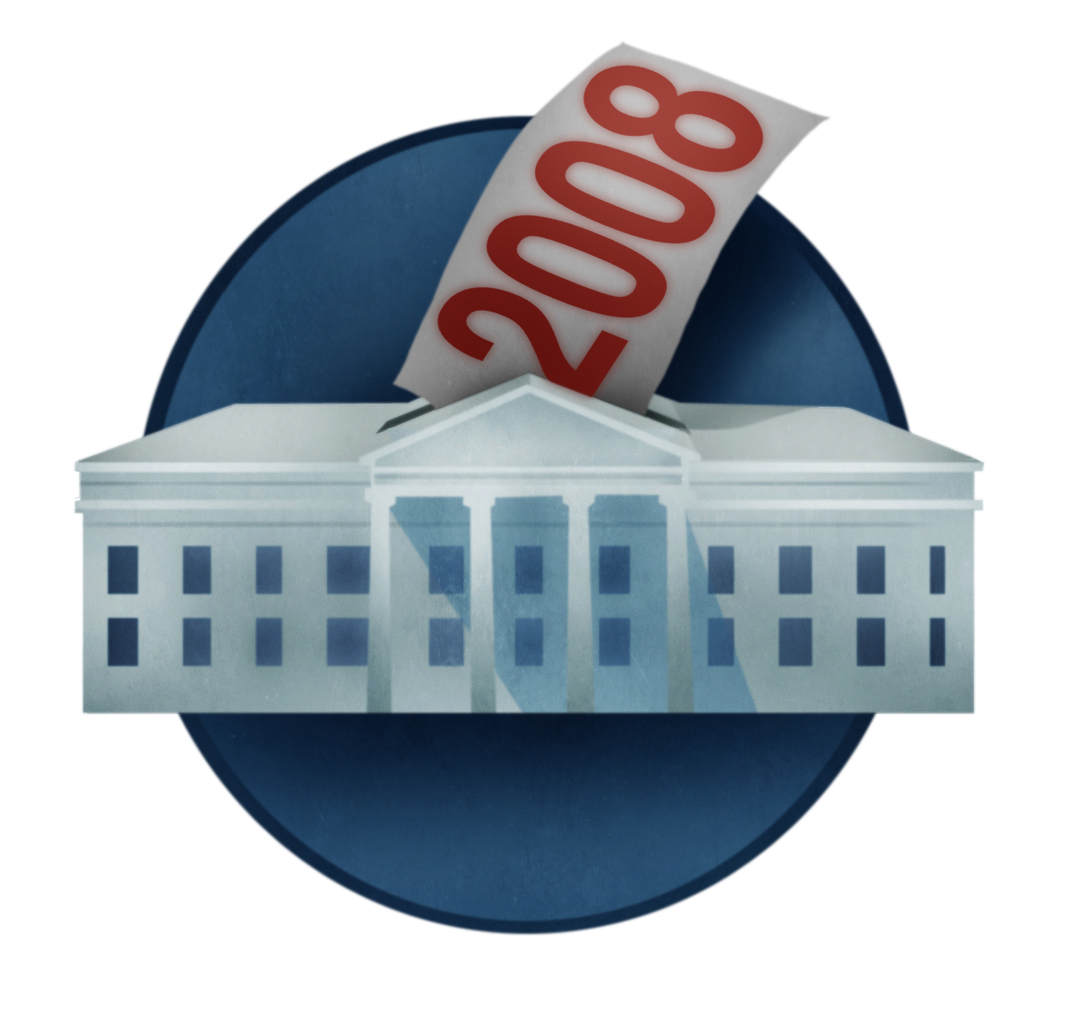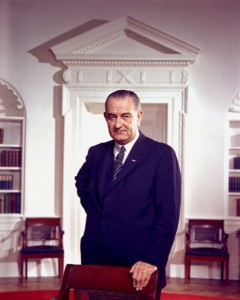One-Party Government Does Not Equal ‘Extreme’
During periods of one-party government, when Democrats controlled both the White House and the Congress, history shows that they have not shifted radically toward a leftward agenda.
Jul 31, 20205.6K Shares800.7K Views
Image has not been found. URL: /wp-content/uploads/2008/10/fdr1.jpgFranklin Delano Roosevelt (Wikimedia)
Republicans have unveiled their closing argument. Desperate to prevent a huge Democratic landslide, Republicans warn that one-party government under Democrats would surely mean liberal extremism.
Raising the specter of an “Obama, Pelosi and Reid” government, Sen. John McCain refers to the combination of Sen. Barack Obama, House Speaker Nancy Pelosi (D-Calif.) and Senate Majority Leader Harry Reid (D-Nev.) as a “dangerous threesome.” Sen. Orrin Hatch (R-Utah) warns, “Liberals are bent on handing Barack Obama a filibuster-proof Senate majority to rubber-stamp his radical agenda.”
The argument is based on a misreading of American history. For, during periods of one-party government, when Democrats controlled both the White House and the Congress, history demonstrates that they have not shifted radically toward a leftward agenda.
Illustration by: Matt Mahurin
Few observers, other than those on the far right, characterized the New Deal as liberal extremism in action. Most perceived President Franklin D. Roosevelt as an experimenter who tried to please everyone. FDR and his Democratic counterparts did everything in their power to save capitalism from the threat of totalitarianism and communism during the Great Depression.
The period between 1933 and 1938 witnessed a dramatic expansion of government. But with each and every policy, Democrats were careful to constrain the ability of government officials to control capitalist institutions and to protect the power of state and local government.
The economic regulations passed in the 1930s allowed private economic institutions to maintain power and profit. Wall Street regulations primarily curbed dangerous and unethical transactions, while the Securities Exchange Commission was set up to monitor wrong-doing. This left the basic decisions to investors.
The major effort to manage pricing and production was the National Industrial Recovery Act in 1933. In the worst economic moment of the nation’s history, the legislation essentially asked businesses to voluntarily adhere to codes that would be enforced through voluntary compliance combined with public pressure. The program collapsed by the end of 1934, before the Supreme Court deemed it unconstitutional, because so many business leaders were not living up to their promises.
The farm programs, created in 1933, subsidized agribusiness as opposed to taking it over. The New Deal offered the agriculture industry financial incentives to make decisions that benefited the larger economy. The government paid for crops. The Communist Party leader, Earl Browder, lamented that Roosevelt was “carrying out more thoroughly and brutally than even Hoover the capitalist attack against the masses.”
Social Security, passed in 1935, only covered a limited portion of the workforce — excluding farmers, domestic workers, professionals and others — while relying on a regressive, self-financed tax to pay for benefits.
Lyndon Baines Johnson (Wikimedia)
Lyndon B. Johnson and the Democratic Congress in 1964 and 1965 were also quite timid. The War on Poverty received meager funding. Democrats had given priority to passing an across-the-board tax reduction to stimulate the economy, rather than spending on the poor.
Congress allocated $500 million for the Community Action program, a figure that paled in comparison to what Washington spent on Social Security, agricultural benefits or defense. The War on Poverty focused on developing self-sufficiency among the poor, a far cry from socialism, and the programs relied on civic organizations and local government rather than centralized control in Washington.
The civil-rights bill that Democrats passed in 1964 emphasized the protection of individual rather than group rights. The more aggressive program of affirmative action would not emerge until a Republican was in the White House, in 1969, and then there was divided government.
When Democrats controlled the White House and Congress, in 1964, they insisted on civil-rights legislation that focused on the more moderate goal of eliminating racial discrimination against individuals. This, they said, respected American principles. The government remained reactive under their plan, responding when individual rights were violated, rather than proactively combating institutional racism.
When it came to health care, the Medicare bill of 1965 was a watered-down version of the far bolder health-care proposals that Democrats floated in the 1940s — unsuccessfully. To avoid another defeat, Democrats decided to narrow their ambitions with a limited program to provide hospital insurance coverage just to the elderly. Medicare was created within Social Security to bolster political support, using its regressive self-financed tax system. The government refrained from regulating the prices hospitals could charge. Blue Cross and Blue Shield handled the insurance.
Even when Southern Democrats lost their power in Congress, united government did not result in a dramatic swing to the left. President Jimmy Carter struggled with the various factions within the Democratic Party over energy independence, welfare reform, defense spending and more. United government did not help the president overcome horrible relations with legislators in his own party. Carter’s concern with inflation trumped his worries about unemployment.
Conservative grass-roots activists took advantage of these problems by allying with the GOP congressional minority in the Congress to stifle measures like SALT II.
Bill Clinton (Flickr: World Economic Forum)
President Bill Clinton did not fare much better. Democrats controlled Washington, but Clinton decided to start his term with deficit reduction and free trade. When he proposed health-care reform, it was a far cry from the single-player, national health insurance models that had been championed by Democrats like Sen. Edward M. Kennedy. And even that legislation did not make it through Congress.
The best case for Republicans to show how one-party government produces extremism comes from the period of GOP rule between 2002 and 2006. One-party government allowed Republicans to pass a massive tax reduction in 2001 that severely cut into the coffers of government and provided significant tax relief to wealthier Americans. After 9/11, the Bush administration authorized a huge expansion of the national security state.
Yet much of what George W. President Bush actually accomplished still relied on executive power and secrecy. Signing statements, covert national-security programs, executive orders and misleading information were all instrumental to how Bush achieved his goals. Bush has continued to rely on these tactics under divided government as well.
The historical record is clear. One-party government does not lead to political extremism — and a look at the past contradicts GOP claims that Democratic control of both ends of Pennsylvania Avenue would produce a dramatic shift to the left. Democrats will face all sorts of pressures, from internal factions to budgetary restraints to the 2012 election, that will serve as a powerful check on what the party can accomplish.
Disappointment, not extremism, is a more realistic prediction of what the party could ultimately face.
Julian E. Zelizer is a professor of history and public affairs at Princeton University’s Woodrow Wilson School. He is the author of “On Capitol Hill: The Struggle to Reform Congress and its Consequences, 1948-2000″ and the editor of “The American Congress: The Building of Democracy.” He is finishing a book on the history of national-security politics since World War II and another on the presidency of Jimmy Carter.

Hajra Shannon
Reviewer
Latest Articles
Popular Articles


